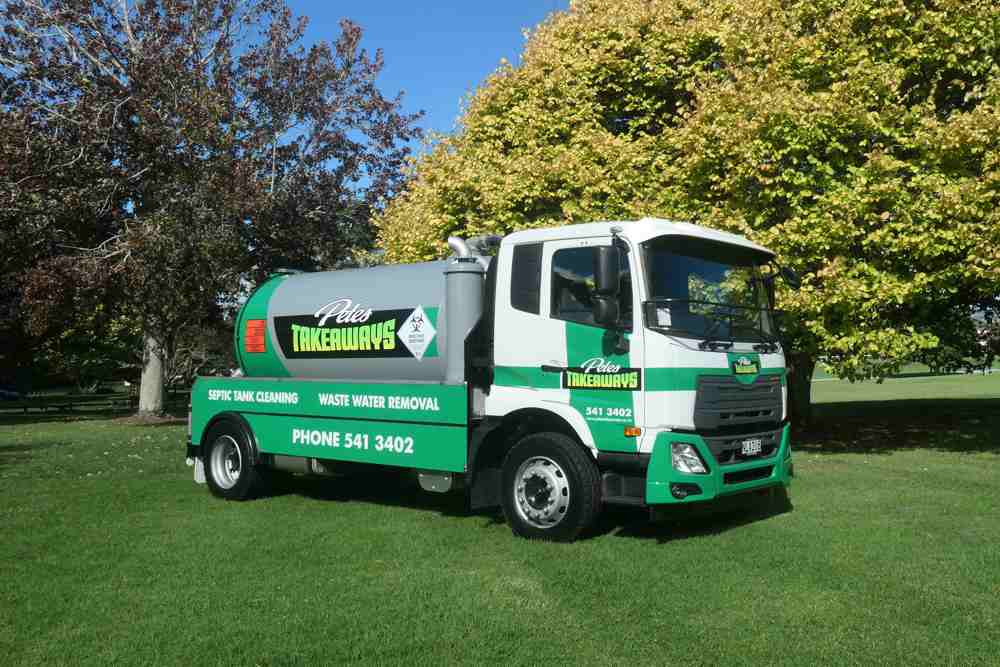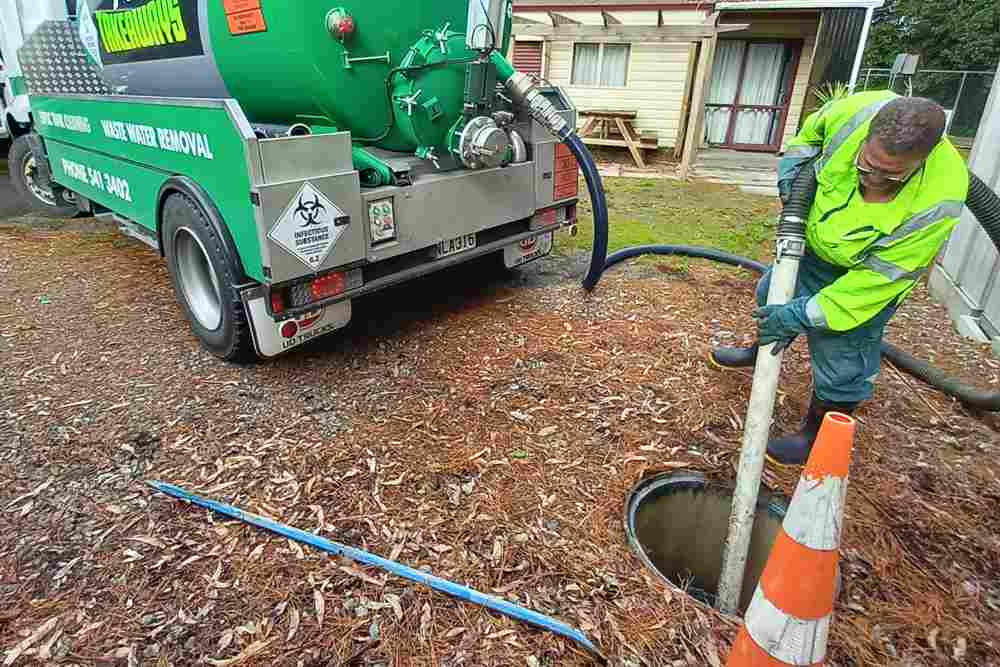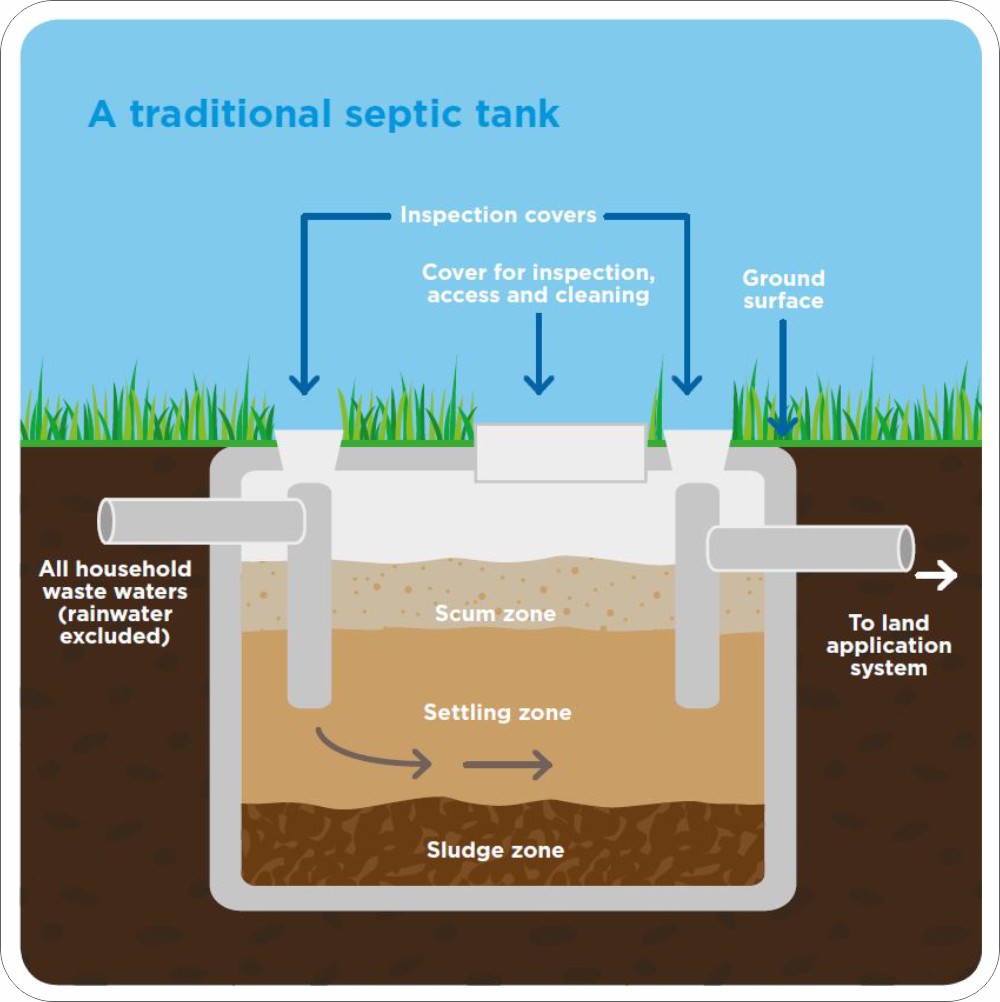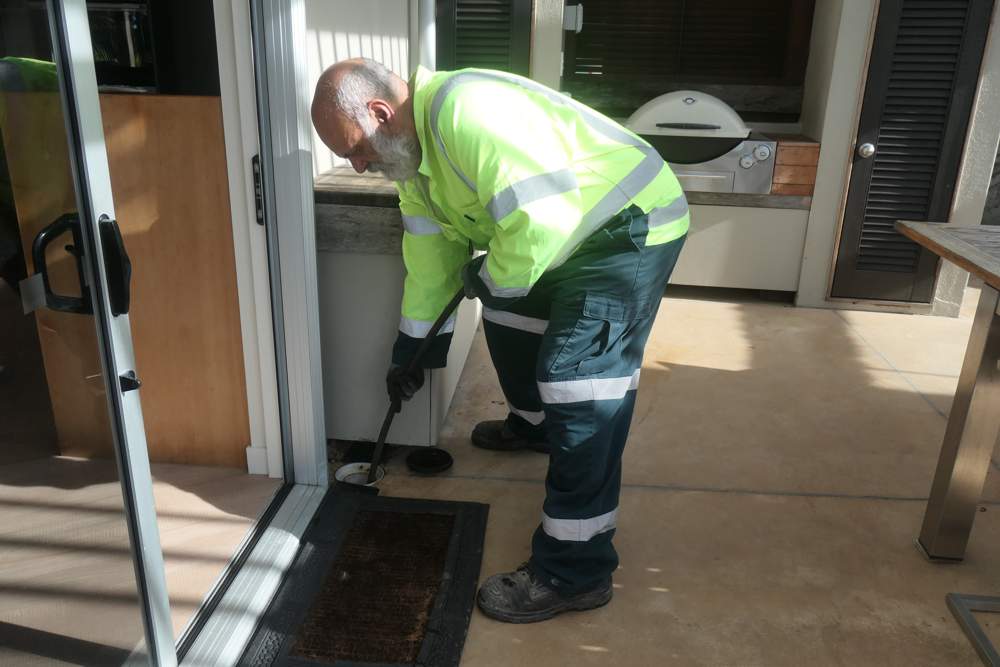



How do they work?
Wastewater from the kitchen, laundry and bathroom, discharges into a septic tank buried on the property. The heavier solids settle to the bottom of the tank, while fats float to the top. The remaining liquid flows out of the tank and discharges into a soakage area (either a dispersal or evaporation field).
Blockages are usually a sign that the sewage disposal system either requires maintenance or repair. Blockages can be either between the house and septic tank, or between the tank and the soakage area.
